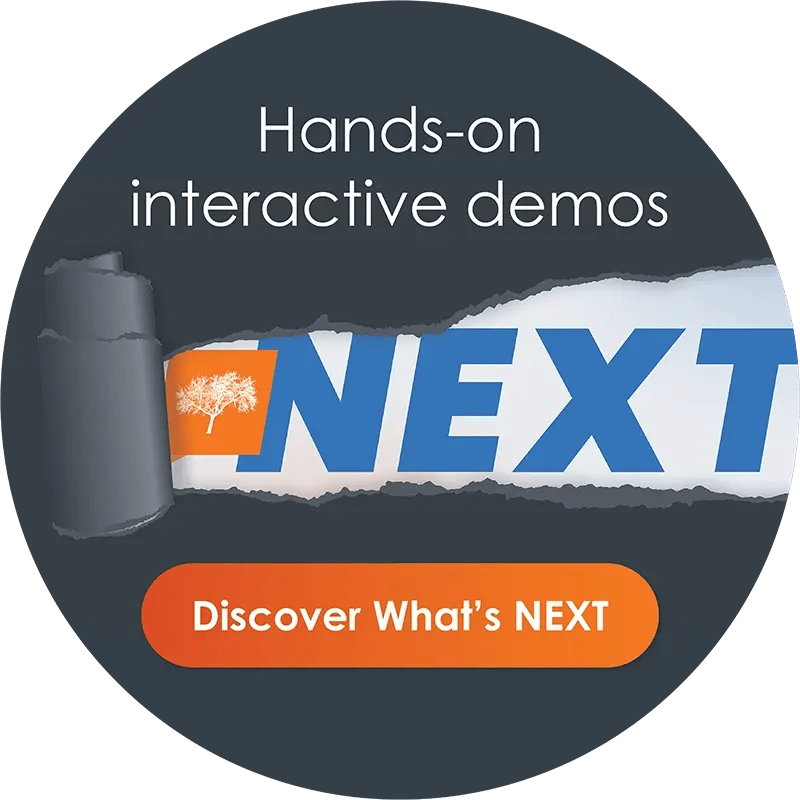The Five Types of eMAR Systems To Choose From for Senior Living

Medication administration records (MAR) have been an operational cornerstone of healthcare organizations for over a century. Traditionally, clinicians and care providers would keep these records using paper charts, manually inputting relevant medical information as treatment progressed.
However, a post-pandemic tech surge accelerated the development and meaningful use of electronic systems, prompting more healthcare providers to embrace digital solutions. In a senior living industry projected for steady growth, the shift to digital operation is increasingly necessary.
The Nuances of Medication Administration in Senior Living
The effectiveness of any medication depends on more than just taking it but also on when and how medical professionals administer it. In situations where multiple medications are involved, the process can get even more complicated. For example, certain drugs need to be taken at specific times to avoid negative interactions with other drugs. Also, some drugs must be consumed with food, while others are most effective when taken on an empty stomach.
Since 80% of older adults take a daily minimum of two prescription drugs, the frequency of medication administration in senior and assisted living communities is significantly higher. As a result, administration schedules tend to be more complex for older individuals, increasing the likelihood of medical errors.
For senior living communities to expand their operations, streamline practice management, and remain competitive, incorporating software solutions such as Eldermark's electronic medication administration record (eMAR) system isn't just a matter of preference: It's pivotal to care coordination, resident well-being, and the ultimate success of your community.
eMAR in a Nutshell
eMAR systems are electronic versions of traditional paper-based charts, often employing templates to simplify data entry. They are a way to digitally track and manage medication and immunization records, diagnoses, lab results, drug reactions, test results, radiology reports, and other key aspects of an individual's medical history. Certain eMAR systems also offer features like e-prescribing, revenue cycle management, medical billings, notifications, and system upgrades.
The Office of the National Coordinator for Health Information Technology (ONC) is the main federal entity that oversees the implementation of electronic software across the healthcare landscape, including the senior living sector.
An eMAR system will typically integrate with other digital healthcare solutions, including telehealth services, electronic medical records (EMR systems), and electronic health records (EHR systems). However, not every system is the same, so choosing the best senior living software in 2023 requires consideration of various factors, including functionality, integration, and resident demographics.
In this article, we'll look at five different types of eMAR systems. Knowing the differences can help you decide which is best suited to ensure the safety of your residents and increase retention/occupancy rates in your community.
1. Standalone eMAR Systems
These systems are the most basic option. They are essentially an electronic version of paper charts, with no added features or functionalities.
Pros
- Operators of small practices or rural senior communities may appreciate a "no-frills" system.
- Standalone systems are cleaner and most resemble traditional medical practices.
- This is the cheapest option.
Cons
- No integration with telemedicine, rostering, or cloud-based EHR/EMR software
- Missing many benefits of integration
- Less functionality than some competitors
2. eMAR Systems and Staff Rostering
Another type of eMAR communicates with your community's rostering tools, coordinating staff schedules while tracking medication administrations. This type of eMAR system is beneficial for communities looking to take the first step toward digitizing their processes.
Pros
- Ideal for communities wanting to start digitization
- Streamlined resource allocation and overall workflow
- Easier implementation and management than other eMAR systems
Cons
- Lacking comprehensive solutions due to missing integration with EHR vendors
- Separate systems don't always integrate well
- May require multiple subscriptions and incur hidden costs
3. eMAR System and Integrated Rostering
eMAR and rostering can also be combined and integrated with other specialized software. These types of eMAR systems can facilitate more seamless communication and automate processes used by different software. All clinical data is available in real-time, ensuring that resident and scheduling information is accurately recorded and readily available.
Pros
- Provides the benefits of specialized software for both eMAR and rostering
- Accessibility on-premises and through web-based portals
- Flexible and adaptable depending on specific community needs
Cons
- More complex to set up and manage due to potential integration issues
- Requires more technical knowledge or support
- Could be more expensive than other options, depending on the systems integrated
4. eMAR and Care Management
eMAR systems that are combined with care management tools offer a holistic approach to care. These systems, such as Eldermark's eMAR software, integrate EHR, task planning, and resident portals to enhance engagement and a community's ability to provide exceptional care. Combining care management solutions with eMAR systems is often the most popular option, providing the vast benefits of system integration without the hassle of putting all your eggs in one basket.
Top eMAR software also offers modules for care coordination, order entry, clinical decision support, mental health care, and even telehealth services, making this type of eMAR suitable for senior living communities of all sizes. The very best eMAR systems also ensure that your community is HIPAA-compliant, guaranteeing resident privacy and security.
Software solution vendors such as Cerner, Athenahealth, and Epic offer similar systems, either on-premise, via cloud-based systems, or as Software as a Service (SaaS). Still, these companies are relatively new to the senior living industry, whereas Eldermark has been a leading provider of digital solutions built specifically for senior living operations for nearly three decades.
Pros
- Adopt a holistic approach to care.
- Improve resident engagement and satisfaction.
- Eliminate administrative errors.
- Centrally store data.
- Integrate with preferred pharmacies.
- Ensure regulatory compliance.
Cons
- Missing functionalities like rostering
- Need for staff training and a potential learning curve
5. All-in-One eMAR Systems
As the name suggests, all-in-one eMAR systems are part of larger electronic health record systems that include rostering and care management, among other features. While they can be an attractive option due to their multi-functionality, it's important to scrutinize these systems closely. Some all-in-one systems may not be as reliable or robust in certain areas as specialized systems, affecting workflow efficiency.
Pros
- Integrated functionality with complementary tools such as EHR software
- A single platform simplifies operations and enhances the interoperability of information
- A single-purchase subscription that eliminates hidden fees
Cons
- Higher reliability issues that might stem from information overload
- Design and integration with other systems that may not always be seamless
- The potential for failure in one software system to adversely affect others
Eldermark | Comprehensive Software Solutions for Senior Living
If you're an executive, operator, or caregiver in the senior living landscape, chances are good that a shift to digital solutions is already on your radar, if it has not already been implemented.
Eldermark's senior living software solutions offer everything from care coordination and customer relationships management to marketing, billing, and a fully integrated eMAR system that could be the difference between efficient, error-free operations and a system riddled with errors and inefficiencies.
With nearly three decades of experience in the sector, Eldermark has support and implementation teams who are there to help you get things up and running quickly and offer incentives to smooth transitions so your in-house team can get back to providing exceptional care and increasing occupancy.
Contact us and schedule a demo to see if Eldermark's solutions are right for you.




